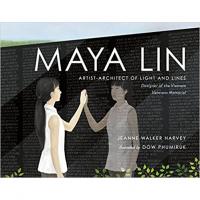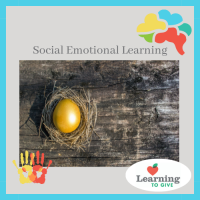This book tells how artist Maya Lin formed the idea for her most famous artwork, the Vietnam Veterans Memorial. She thought carefully about the meaning of the work, the form, and how she wanted people to feel. The Vietnam Veterans Memorial is so powerful, when people visit the art they...
This activity encourages youth to discuss the power of privilege. Participants will understand how their perspectives, identity, and values influence their decisions in this activity. They will also understand that privileges are social constructs, A social construct is something that exists not in reality, but as a result of human interaction. It exists because humans agree that it exists.
Youth reflect on the lessons they have learned through building cultural competence in this unit. They identify an adult they trust to have critical, or difficult, conversations.
- Read more about Critical Conversations
- Log in or register to post comments
Through the voices of an immigrant and refugee, youth gain empathy and understanding of the experience of leaving your home for a new place.
- Read more about Immigrants and Refugees
- Log in or register to post comments
Cultures are sometimes represented through clothing items like head wear or colors. These clothing items can be very meaningful and important, and it is respectful to learn about others and what their cultural expression means to them. It is never okay to mock someone for what they wear or to say they shouldn't wear it because it is different. This lesson raises awareness of the meaning of cultural expression and the danger of stereotypes.
- Read more about Culture-Based Apparel
- Log in or register to post comments
One of the ways we identify ourselves is through the culture of our gender identity. This may include our gender and how we express ourselves through our clothing, hair, and what we like to do and who we like to spend time with. This lesson raises awareness of the variety of ways people express who they feel they are.
- Read more about Gender Identity and LGBTQ+
- Log in or register to post comments
Our communities may have people from many cultures and there may be many different languages spoken. Sparked by a playful video of kids teaching other kids their languages, we explore the languages represented in our communities.
- Read more about World Languages
- Log in or register to post comments
In this lesson, we broaden our awareness of different cultures and how they celebrate holidays. An optional service project includes writing letters to request diverse holidays be added to the community calendar, if they aren't already observed.
- Read more about Celebrations Around the World
- Log in or register to post comments
In this lesson we learn the history of the Indigenous people who lived in our specific area. We learn that language matters, and there is a respectful way to talk about the heritage of a person who was first to live in an area.
- Read more about Indigenous Heritage Appreciation
- Log in or register to post comments
Why do we have cultural recognition months? The U.S. calendar of holidays includes months like National Hispanic Heritage Month and National Women's History Month in recognition of groups that have been historically underrepresented in the U.S. This lesson explores why and how we put these spotlights on specific months.
- Read more about Cultural Recognition Months
- Log in or register to post comments

